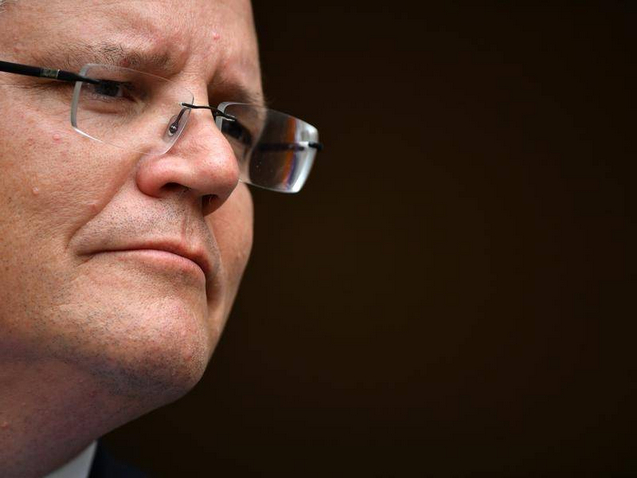Families huddle on a once picturesque beach as their homes burn behind them. Baby koalas, their fur singed, cling to their mothers as they face a fiery demise. And military helicopters whomp overhead, searching the charred landscape for stragglers looking for a last-minute escape.
These bracing scenes illustrate a terrifying reality on the ground in Australia, where more than two dozen people and millions of animals have died in wildfires that have destroyed more than 25 million acres since December and that are not expected to be contained anytime soon.
The blazes, so large that they’ve created their own weather systems, have sparked widespread panic, prompted a military deployment and caused billions of dollars in damage. “We’re in the middle of a war situation,” says David Bowman, director of the Fire Centre Research Hub at the University of Tasmania.
The infernos have also captured the world’s attention. While climate-linked disasters aren’t new–from the uptick in deadly heat waves to increasingly powerful hurricanes, floods and blizzards–images of such destruction often fail to resonate and are quickly forgotten in the next day’s news cycle.
But what’s happening in Australia feels different. Haunting pictures of cute koalas, kangaroos and wallabies that have died en masse tear at our heartstrings. And as cynical as it may sound, the fact that the devastation is occurring in a wealthy, English-speaking country reminds even the most privileged observer that money alone cannot buy immunity from the wrath of nature.
“You have the perfect storm of a story,” says Anthony Leiserowitz, who directs the Yale Program on Climate Change Communication. “[It] is happening on literally the other side of the planet, yet it seems to be resonating in this country.”
Most significantly, the Australian fires are burning at a time when the world is becoming increasingly attuned to the catastrophic dangers of unchecked climate change. Activists, a series of dire scientific reports and other recent extreme, climate-linked events–including wildfires more than 7,000 miles away in California–have perhaps succeeded in sharpening the mind. Whether global leaders are able to translate this newfound awareness into meaningful political action is the next test.
There’s no question about the link between the Australian wildfires and climate change. The country’s famed bush–the continent’s vast, often dry expanse that is sparsely inhabited but filled with vegetation–has always been prone to wildfires. But a warming climate has heightened the risk: decades of worsening droughts have killed off plants, grasses and trees, creating tinder for fires, and warmer average temperatures have created furnace-like conditions in which fire can easily spread.
Last year was Australia’s hottest and driest on record, with temperatures in some parts of the country topping 120°F in December, according to government data. A 2019 report from the Australian government concluded that climate change had already “resulted in more dangerous weather conditions for bushfires in recent decades.”
But Australia’s current leadership remains largely in denial about the problem. Along with the U.S., Russia and Brazil, Australia–where coal mining is a significant industry and a powerful lobby–is one of just a handful of countries with national politicians who have steadfastly refused to consider bold action to reduce greenhouse-gas emissions.
But while U.S. President Donald Trump outright denies the science of climate change, Australian Prime Minister Scott Morrison has taken a different tack in recent months. He isn’t contesting that climate change is real or that it has worsened the bushfires. Instead, he argues that his country can’t do anything about it because Australia’s greenhouse-gas emissions make up only a small share of the global total.
“To suggest that with just 1.3% of global emissions, that Australia doing something differently, more or less, would have changed the fire outcome this season,” he told an Australian radio station, “I don’t think that stands up to any credible scientific evidence at all.”
It’s not clear if, or for how long, Morrison’s position will remain politically tenable among his fellow citizens. Last year, 61% of Australians said their government should take urgent action “even if this involves significant costs,” according to a survey from the nonpartisan Lowy Institute. That number is up 25 percentage points since 2012. “There’s been a backlash against Scott Morrison,” says Lowy’s Daniel Flitton. “Issues to do with the environment have been key to the downfall of successive Prime Ministers in Australia.”
Morrison’s dismissive rhetoric on climate change makes him an outlier among democratic leaders, who are for the most part rushing to proclaim all they’re doing to save the planet.
But his position points to a dilemma: he is correct, of course, that Australia cannot single-handedly prevent climate change in the country’s backyard. Instead, nations–including those that aren’t emitting that much on their own–must act collectively to embrace policies that reduce emissions.
Whether global leaders act boldly will determine if the heartbreaking images from Australia that have now gripped the world are a tragic aberration or a look at what’s to come.
Links
- Australia's Wildfires and Climate Change Are Making One Another Worse in a Vicious, Devastating Circle
- This Marsupial Was Only Discovered 5 Years Ago. Climate Change and Australia's Bushfires Are Driving It to Extinction
- Australia's Fires Are Terrifying. Will They Get World Leaders to Act on Climate Change?
- Wildfires Are Raging Outside Every Major City in Australia
- Australia Is Burning: Scenes From a Deadly Season of Bushfires
- Battered PM announces bushfires royal commission and puts climate change on the agenda
- 'Living Across Two Continents is Environmentally Unethical'
- Elton John Donates $1 Million to Australian Bushfire Relief, Says Devastation Reaches 'Biblical Scale'



